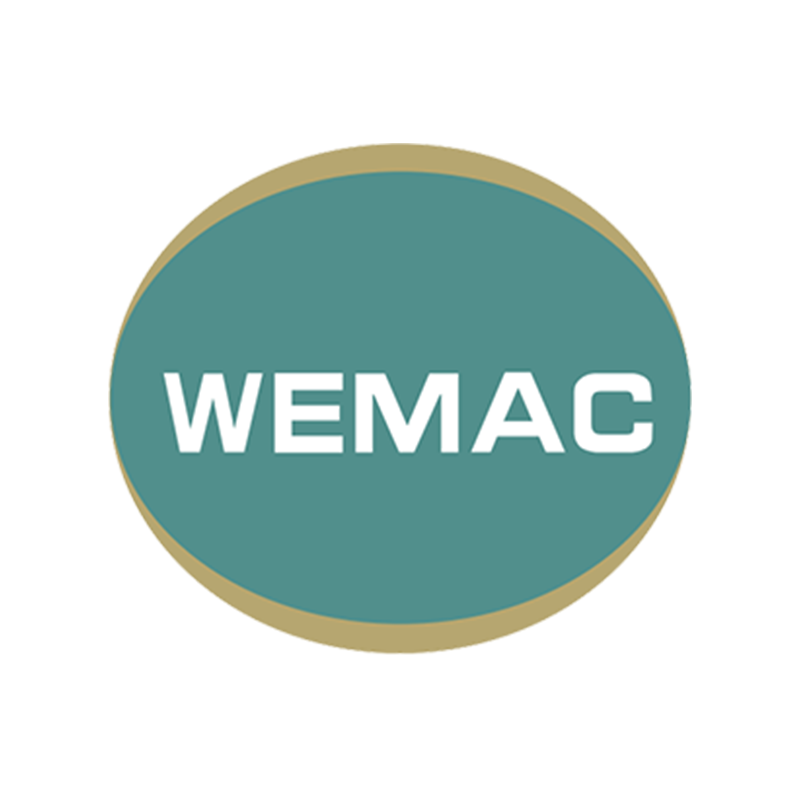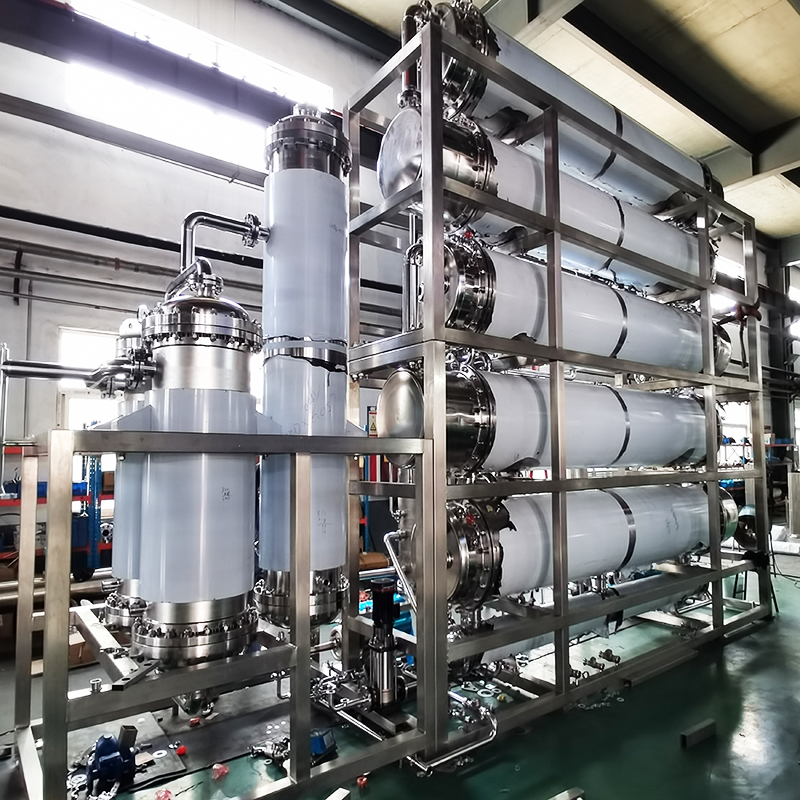מàngי אנוסה הפוכה: הרחבת תקופת החיים בתוכנויות מים טהורים
גורמים קריטיים המשפיעים על עמידות הממברנה של RO
השפעת איכות המים על הורדת הממברנה
איכות המים היא גורם מכריע המשפיע על התדרדרות של רטלי אוסמוזה הפוכה (RO). גורמים כגון כל המוצקים המופרכים (TDS), pH, וערפל תרמו באופן משמעותי לשרידה של הממברנה. מחקרים הראו כי רמות TDS גבוהות מתקשרות עם שיעורי זיהום ממברנה מוגברים, אשר יכולים להשפיע באופן חמור על ביצועים ותוחלת חיים. לדוגמה, TDS מוגברת יכולה לגרום לקריחה חמורה, מניעה את תהליך הסינון ודורשת ניקוי תכופות. לכן, תהליכי טיפול מראש כמו קרישה וסינון חיוניים לשימור שלמות הממברנה, הפחתת העומס על מערכת RO על ידי הסרת חומרים פוטנציאליים לפני שהם מגיעים לממברנות.
פרמטרים תפעוליים המשפיעים על אורך החיים
הפרמטרים הפעילים של מערכת RO משפיעים ישירות על ביצועי המàng והתקופת חייו. גורמים מכריעים כמו לחץ התאוב וטמפרטורה חייבים להיות תחת מעקב ושיפור כדי להבטיח פעולת מערכת יעילה. דיווחים תעשייתיים מצביעים על כך שפעולת בתוך טווחי לחץ אופטימליים, בדרך כלל ספציפיים לסוגי màng, יכולים לשפר את האפקטיביות ולאריך את חיי המàng.ßerdem, שיעורי זרימה משחקים תפקיד גדול בהגדרת תקופת החיים של המàng. מחקרים שדה מראים כי שיעורי זרימה גבוהים יכולים לגרום לתסכול מכני משמעותי, מה שיגרום למחיקה מוקדמת, בעוד שזרימה לא מספיקה יכולה לעודד חסימות. התאמת הפרמטרים הללו היא קריטית כדי להשיג איזון ולהגדיל את תקופת החיים של המàng.
אתגרות תאימות כימית
תאימות כימית עם תהליך הטיפול היא אспект נוסף מכריע בדיאורנות קרני RO. חומרים כימיים כמו כלור וסוכנים שונים לשיקום המבוססים על מים יכולים להפריך את קרני ה-RO. מחקרים הדגישו שהקרנים מסוימות הן יותר חשופות לפירוק כימי, במיוחד אלו עם התנגדות נמוכה יותר לагентים חמצניים כמו כלור. כדי להתמודד עם זה, חשוב לבחור קרנים תאימות לחומרים שצפוי לצפות להם בתהליך. המלצות כוללות בחירת קרנים עם התנגדות גבוהה לחומרים ספציפיים בהתבסס על איכות המים הצפויה והתהליכים של הטיפול, מה שמבטיח תקון מתמשך וחיי פעולה ממושכים.
אסטרטגיות תחזוקה להארכת תקופת החיים של הקרן
פרוטוקולים מתקדמים לשיקום למניעת צמיג
פרוטוקולי ניקוי יעילים הם קריטיים במניעת היווצרות אבנית וזיהום בממברנות, דבר שיכול להאריך משמעותית את תוחלת החיים של ממברנות אוסמוזה הפוכה (RO). לוחות זמנים קבועים לניקוי נחוצים כדי להסיר משקעי אבנית ולמנוע סתימה בממברנות. שיטות עבודה מומלצות בתעשייה ממליצות להשתמש בחומרי ניקוי מתאימים המותאמים לחומרי הממברנה. חומרי ניקוי חומציים ממיסים ביעילות אבנית מינרלית, בעוד שחומרי ניקוי אלקליים מסירים לכלוך אורגני. לדוגמה, מחקר שנערך על ידי איגוד עבודות המים האמריקאי הדגים עלייה של 30% בחיי הממברנות עם ניקויים קבועים וממוקדים. מחקרי מקרה שונים מדגישים את חשיבותה של אסטרטגיית תחזוקה זו, ומדגישים כי פרוטוקולי ניקוי עקביים מסייעים בשמירה על ביצועי ממברנות אופטימליים.
מעקב בזמן אמת של TDS ו diferenetials לחץ
הפעלת מערכות מוניטורינג בזמן אמת משחקת תפקיד מרכזי בהבטחת יעילות מערכת ה-RO ובארכת תקופת החיים של המàng. המערכות האלו עוקבות אחר פרמטרים קריטיים כמו רמות החומרים פתורים הכוללים (TDS), הבדלי לחץ וערכי שטף. טכנולוגיות מודרניות מאפשרות מוניטורינג קבוע עם התראות עבור סטיות מהטווחים הרגילים של פעילות. למשל, חיישנים שמוניטרים את רמות ה-TDS בזמן אמת יכולים לגלות ולטפל בעיות מוקדם, למנוע כשלונות אפשריים. הבנה והנפקת של פרמטרים אלו עוזרת בתחזיות תחזית תחזיות, מאפשרת התערבות בזמן. דוגמאות תעשייתיות חושפות שהמערכות האלו יכולות להפחית באופן משמעותי את הסיכוי לפיצוצים בלתי צפויים ואת ההוצאות על תיקונים יקרים על ידי איפוס בעיות קיימות מראש.
בקרת ביופילם במערכות ברמה גבוהה
הצטברות אורגניזמים חיה מפריעה מהווה אתגר משמעותי במערכות מים בעלי טהרה גבוהה, ומשפיעה על הביצועים ועל איכות המים. היא מתרחשת כאשר חומרים ביולוגיים מתאספים על שטחי ממברנות, מה שמפחית את זרימת המים ומפחית את יעילות המערכת. אמצעי מניעה, כמו ביוצידים וקוטבות ממברנה מיוחדות, הם יעילים נגד הצטברות אורגניזמים חיה. מחקר שפורסם בכתב העת 'Journal of Water Process Engineering' מצא כי שימוש בביוצידים יכול להפחית את קצבי הצטברות אורגניזמים חיה עד ל-40% בתוכניות פרמצבטיות, דבר חיוני כדי לשמור על איכות המים. יישום אסטרטגיית שליטה בהצטברות אורגניזמים חיה מבטיח את ההמשך של חיי הממברנות ושומר על הביצועים שלהם, במיוחד בסביבות המצריכות תקן טהרה גבוה, כמו התעשייה הפרמצבטית, שבה לא ניתן לפצות על איכות המים.
השגת ביצועים מיטביים של RO במערכות מים פרמצבטיים
הפקת WFI באמצעות תצורות RO מרובות שלבים
התקנים מרובים של אוסמוזה הפוכה (RO) הם חיוניים בייצור מים לשפיכה (WFI), שהוא רכיב קריטי בתוכניות פרמצבטיות. התקן מתקדם זה כולל מספר יחידות RO עובדות ברצף כדי להשיג רמות טהרה גבוהות יותר על ידי הסרת תחליפי בצורה מוחלטת יותר מאשר במערכות חד-שלב. האפקטיביות שזכתה דרך ההתקן הזה לא רק משפרת את התאמה לתנאים רגולטוריים חסרי פשרות אלא גם מבטיחה עקביות איכות המים הנדרשת לתהליכים פרמצבטיים רגישים. מספר יצרני פרמצבטים אומצים תכנונים מרובים כדי לשמור על שלמותם של קווי הייצור שלהם ל-WFI, מה שמראה על אפקטיביות ו.borderWidth של המערכת בהתקנות שונות.
הוכחת אפקטיביות ממברנה להסתגלות לUSP
הבטחת כך שקרני RO עונות על תקנות ה-USP של ארצות הברית היא חיונית לייצור תרופתי, בהתחשב בדרישות האיכות העצומות בתעשייה. תהליך ההאשראי כולל בדיקות קשות כדי לוודא שהקרנים יכולות להגיעה באופן עקבי לרמות טהרה דרושות. קריטריונים של ביצועים כמו שיעורי דחייה, שיעורי זרימה ועמידות תחת תנאים של פעילות מוחלטים כדי להבטיח התאמה והנפקת איכות המוצר. מומחים בתעשייה מדגישים את המגמה לפרוטוקולים מורכבים יותר של האשראי שכוללים טכנולוגיות מעקב בזמן אמת ובידוד חיזיוני, מה שמציג את הנוף המתפתח של דרישות ייצור תרופתי.
השתלבות של מערכות CIP עם רשתות RO
מערכות ניקוי במקום (CIP) ממלאות תפקיד מכריע בשמירה על ביצועי רשתות RO על ידי הבטחת ניקוי שגרתי והיגיינה ללא פירוק רכיבים. שילוב מערכות CIP ברשתות RO הקיימות כרוך בהקשרת מערכות צינורות ופיקוח מתאימות כדי לאפשר מחזורים ניקוי אוטומטיים המותאמים לצרכים הספציפיים של הממברנות RO. שיקולים מרכזיים כוללים התאמה כימית, אופטימיזציה של רצף ניקוי, והפחתת צריכת המים. מתקנים שהיישמו טכנולוגיית CIP מדווחים על שיפורים משמעותיים, כגון ירידה בזמן הפסקות ושימוש ממושך של הממברנה, כפי שמעידים שיפורים סטטיסטיים ביעילות התפעולית.
מערכת מי מלח מים יעילה מאוד
תכונות מפתח: סינון רב שכבה ושליטה אוטומטית
מערכות מיכלים מתקדמות כמו מפעל מיכלים של מי ים עם אוסמוזה הפוכה יעילה מאוד של חברת Eagle Pharma Machinery כוללות טכניקות סינון רב שכבות חדשניות, אשר משפרות באופן משמעותי את היעילות על ידי הבטחת טיהור מים יסודי. מערכת זו מסירה ביעילות טמאים ומספקת אספקת קבועה של מים איכותיים. בקרות אוטומטיות הן תכונה מרכזית, המאפשרת מעקב בזמן אמת ולוודא שהמערכת פועלת ביעילות גבוהה ביותר. מערכות אוטומטיות יכולות להתאים פרמטרים תפעוליים בהתבסס על איכות המים המוסלטים, ויוצרים תהליך חלקי. מדדי ביצועים בתעשייה מראים את יעילות המערכות האלה, אשר חיוני לשימור תקני הפעלה בסביבות הדורשות דיוק ואמינות גבוהות.
בנייה ממגזר הים עבור סביבות קשות
יחידות מיתוג כמו של איגל פרמה בנויות באמצעות חומרים של מים שנועדו במיוחד לעמוד בסביבות הקשות והסחבות האופייניות לסביבות ימיות. החשיבות של שימוש בחומרים עמידים כאלה טמונה בתקופת החיים הארוכה והביצועים המתמשכים של מערכות אלה, מכיוון שהם עמידים על קורוזיה בלתי נמנעת שכיחה בחשיפה למים ימיים. תכונות העיצוב כוללות חלקים עמידים לקורוזיה ומגשימים שמגנים על פני השטח הפנימי והחיצוני מפני חשיפה מתמשכת למים מלחים. מספר מחקרים מקרים תיעדו את השימוש המוצלח של חומרים ברמה ימית בהבטחת אורך החיים של מערכות מיתוג. מערכות אלה הוכיחו את עמידותן בתנאים קיצוניים, אשר מאשרת את הערך שלהם כאפשרות אמינה עבור מתקנים הממוקמים באזורים חופים או בים.
יישומים של מי יציאה של רמת תרופות
החשיבות wichtigkeit של ייצור מים בעלי טהרה גבוהה לשימושים פרמצבטיים לא יכולה להיות מופחתת, והטכנולוגיהnology של דסאלינציה משחקת תפקיד קריטי בפגישת הדרישות העצומות של התעשייה. מערכות דסאלינציה כמו אלו של Eagle Pharma מספקות מים המקיימים את תקן האיכות הקפדניquired עבור יצור פרמצבטי. מסגרות רגולטוריות דורשות התאמה לסטנדרטים שונים כדי להבטיח את טהרת המים והבטיחות שלהם. מערכות אוסמוזה הפוכה (RO) הן חלק בלתי נפרד מהпро세ס הזה, מספקות מים חסרי זיהום שחיוניים לתהליכי ייצור פרמצבטיים. יישום מוצלח של הטכנולוגיה הזו בתעשיה הפרמצבטית מראה את יכולתה לייצר מים שמתקיימים את התקנים הגבוהים של התעשייה, ומבטיחים גם התאמה לרגולציות והימנעות מתהליכים לא מפוקחים.
הבטחת עתיד לביצועי RO שלך
חדשנות בחומרים של ממברנה בהORIZON
חומרים עתידיים למסננים באוסמוזה הפוכה (RO) עומדים להפוך את היעילות והעמידות. חדשנות זו נובעת מתקדמות בהנדסה מולקולרית שיכולה להוביל לשיפורים משמעותיים בביצועי המליחות. תחזיות של סקירת התעשייה מצביעות על כך שהמגמות העתידיות בטכנולוגיית מסננים יתמקדו בשיפור קצב הניקוי של מי שתייה, הקלה בצריכת האנרגיה וزيادة חיי המסנן. לדוגמה, פיתוח מסננים מבוססי גרפן מציבים פוטנציאל רב בזכות חוזקם וייחודיויותם. התקדמות מסוג זה תקדם את ההתפתחות של טכנולוגיית RO, ותאפשר מערכות מי שתייה אמינות וברות קיימא ליישומים מגוונים - ממפעלים ועד תרופתי.
השתלבות חיישנים חכמים למaintenance תחזיתית
האינטגרציה של חיישנים חכמים למערכת RO מספקת יתרונות ניכרים על ידי הפעלת תחזית תקופת תחזוקה. החיישנים האלה יכולים לאסוף מגוון רחב של נתונים, כמו ירידות לחץ, שיעורי זרימה ושינויי טמפרטורה, שהם קריטיים למעקב אחר בריאות המàngה ולהחלטה על צרכי תחזוקה. חברות המשתמשות בטכנולוגיות אלה דיווחו על יעילותperation מproved וזמן עצור מופחת. למשל, חלק מהנהיגים בתעשייה משתמשים באלגוריתמי למידה מכונה לצד נתוני חיישן כדי לצפות ולהגיב מראש על כשלונות אפשריים, מה שמבטיח פעולת רציפה ואופטימלית של מערכות טיהור המים שלהם.
מדדיustainability עבור ניתוח מחזור חיים של RO
החשיבות wichtigkeit של מטרותustainability היא מכרעת בהערכת הערכה השפעת סביבתית של מערכות RO. על ידי התמקדות במדדים עיקריי ביצועים (KPIs) כמו שימוש אנרגיה, ייצור זבל ועקבויות מים, ארגונים יכולים לבצע ניתוח מחזור חיים מקיף של התקנות הסינון הפוך שלהם. המטרות האלה עוזרות לזהות תחומים לשיפור לפתח אסטרטגיות שיאמינו את האפקטיביות הכללית. מספר ארגונים שאמצו את המטרותustainability ראו התקדמות ניכרת ביעול הפעילות, מפחית את הרגל הפחמן שלהם והישר עם יעדי סביבה רחבים יותר. ככל שנתקדם טכנולוגית, המטרות האלה יהפכו לחלק בלתי נפרד מכל גוף שמחפש להחזיק מערכת ייצור מים טהורים מתמשכים.

 EN
EN








































